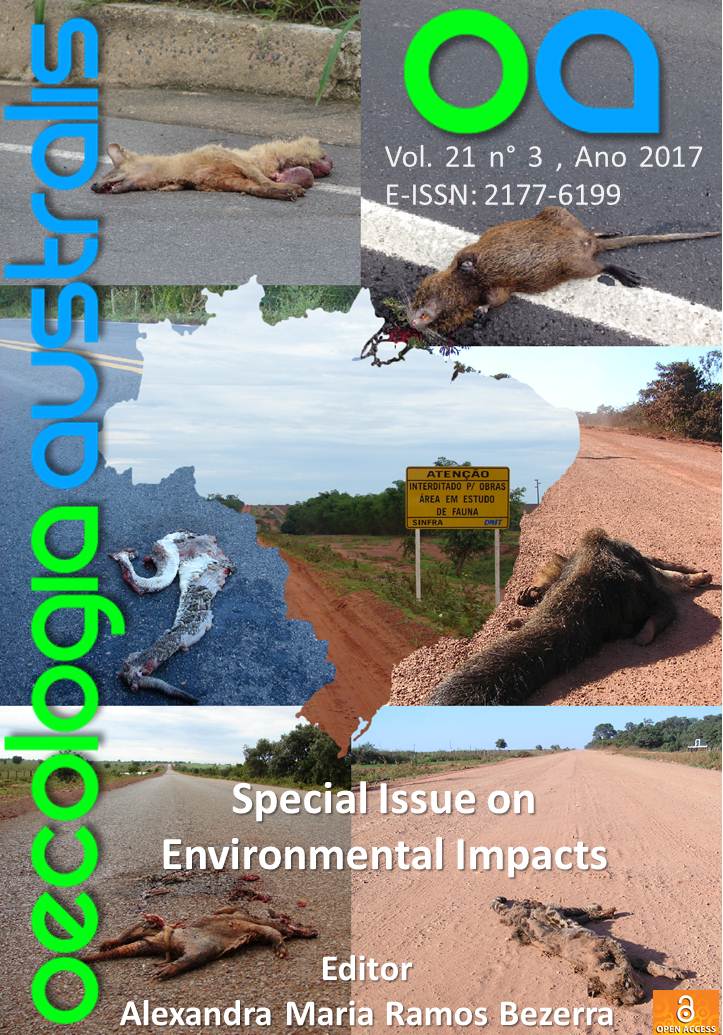ROADKILL IN THE BRAZILIAN CERRADO SAVANNA: COMPARING FIVE HIGHWAYS IN SOUTHWESTERN GOIÁS
DOI:
https://doi.org/10.4257/oeco.2017.2103.10Keywords:
biodiversity, Cerrado, highways, Road EcologyAbstract
This study described and analyzed the roadkill of native vertebrates in the southwest of the Brazilian State of Goiás, evaluating the influence of the seasonal variation in climate and the influence of highway structure (e.g., two lane/one lane routes, road conditions). In this context, we collected samples each month over a one-year period on five of the region's highways, all of which originate in the town of Jataí, linking it to the neighboring towns of Acreúna, Aporé, Itajá, Doverlândia and Portelândia. We recorded 1113 individuals (0.115 individuals/km/year), including nine amphibians, 55 reptiles, 223 birds,and 826 mammals. The two-lane highway had the highest species richness and abundance, and was significantly different from the other roads. We also found significant seasonal differences in overall abundance, and the species richness and abundance of the herpetofauna, with a greater number of collisions occurring during the rainy season. Over the long term, programs of environmental education - especially during the rainy season - may help to raise the awareness of drivers.Downloads
Download data is not yet available.
Downloads
Published
2017-11-10
Issue
Section
Articles


